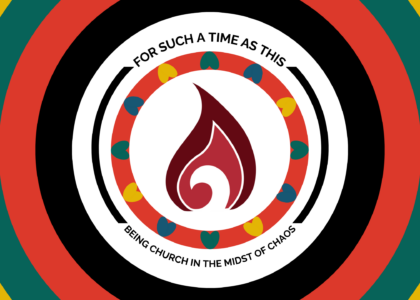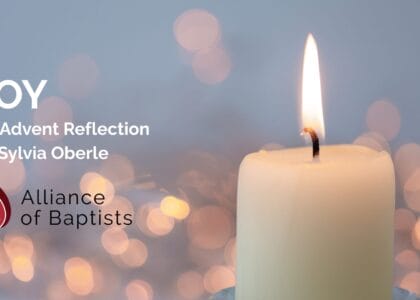By Erica Lea-Simka
Picture it—I am a junior in college and sitting in a lecture hall writing pages of notes and wondering what will be on the next exam in Introduction to Women’s Studies. The professor is an anthropologist by training and a brown woman in the heart of conservative Texas. Lecture after lecture she goes on and on and how white feminism has failed Women of Color and other women outside a narrow respectable WASP cis-het identity.
After a few weeks, I start feeling annoyed. I signed up for Women’s Studies, not Critical Race Theory or LGBTQ History. From day one to the final exam, the professor drilled into us to always ask, “which women?.” When Betty Friedan writes about “the problem with no name,” which women does she mean? When Simone Beauvoir writes about “the second sex,” which women does she mean?
After being formed by this question through the course and professor, an entire minor’s worth of Women’s Studies, and my own experiences navigating the sticky patriarchy, I find myself asking the same question—which women?
Looking from inside the Progressive Christian Industrial Complex, where supporting “women in ministry” is core, which women do we mean when we lament sexism and advocate for equity?
Which women ministers and pastors do we celebrate, especially on this Feast of St. Mary Magdalene, Apostle to the Apostles? Which ministries and ministers do we elevate as excellent? Are you annoyed by my questions?
Mary Magdalene is my favorite person in the Christian Testament because she is inherently queer—defying social norms and sending institutional Christianity into a tizzy. How we talk about her shows our embedded beliefs just as how they talk about me and my fellow non-conforming colleagues brings out embedded biases for clear display.
Like the Holy Spirit on Pentecost, Mary the Tower pushes Christians to go beyond humdrum familiarity into the radical, wild, Holy Spirit-led unknown.
Questioning easy, institutional assumptions about Mary Magdalene is at the heart of Libbie Shrader’s groundbreaking work. Dr. Shrader offers a summary of her scholarly discoveries in conversation with Diana Butler Bass on this episode of The Cottage.
Essentially, Dr. Shrader concludes that Mary Magdalene’s role in Jesus’ life was diluted by early editors or scribes of the Gospel of John by “correcting” some early manuscripts and attributing some actions to Martha and/or Mary of Bethany when in fact those actions were much more likely done by Mary Magdalene. She points out the uncanny similarities between Mary of Bethany and Mary Magdalene and offers evidence that the character of Martha may have been invented altogether. Well before Pope Gregory I taught Mary Magdalene was a prostitute, Tertullian credits the Christological Confession to Mary (presumably Magdalene) rather than Martha as it currently appears in John 11:27. Various suspicious and apparently misogynistic changes seem to have been made in how the power of Mary Magdalene’s status as a devoted disciple of Jesus is documented.
Even Mary Magdalene’s name has fingerprints of misogyny. Dr. Shrader suggests that a more accurate translation of her name should be Mary the Tower. St. Jerome of Stridon calls her Mary the Toweress. Put side by side with Peter the Rock, there is a powerful witness of equity among the earliest disciples of Jesus.
Which Mary Magdalene will we lift up on July 22? Which woman? The one misrepresented and cleaned up to be simpler, or the radical one who challenges assumptions? So it is with women in ministry.
In the same breath that we celebrate this radical Mary the Tower, let us celebrate radical women in ministry—poor women, trans women, butch women, Black and Brown women—alongside the dominant culture depiction of women. All women. Let us not be guilty of treating contemporary apostles the way apostles like Mary the Tower have been treated. Which Mary? Which women?
Mary Magdalene is my favorite person in the Christian Testament because she is inherently queer—defying social norms and sending institutional Christianity into a tizzy. How we talk about her shows our embedded beliefs just as how they talk about me and my fellow non-conforming colleagues brings out embedded biases for clear display. Like the Holy Spirit on Pentecost, Mary the Tower pushes Christians to go beyond humdrum familiarity into the radical, wild, Holy Spirit-led unknown.
As global Christendom, especially in the West, moves toward an uncertain future, we are invited to look to Mary the Tower and other misjudged women in ministry to lead us in what following Jesus looks like.
“Mary Magdalene is a bold messenger, a tower of strength and courage, a willing apostle. May we look to her as our model as we carry forth our message of a new church for a new day.” Women’s Ordination Conference

Rev. Erica Lea-Simka (she/they) is a graduate of San Jacinto College, Texas A&M University, and Truett Theological Seminary. She has also studied as a continuing education student at Anabaptist Mennonite Biblical Seminary, Eastern Mennonite University, and Hebrew College. Pastor Erica previously served Alliance of Baptist congregations Lake Shore Baptist Church (Waco, Tex.)] and Calvary Baptist Church (Washington, D.C.). She is thankful to be home among Mennonites since November 2017 as Pastor of Albuquerque Mennonite Church. She also serves as the Southwest Representative for Mennonite Women USA. When not at church or the public library, she can be found cooking, power walking, traveling, watching British mysteries, and spending time with her interfaith family.





Recent Comments